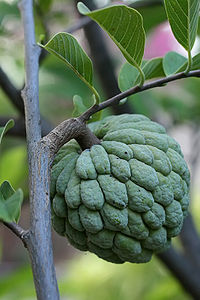
Photo from wikipedia
Abstract A dye being reluctant to degradation due to their structural complexity requires a cost-effective and an eco-friendly technique of degradation. Present study, Bacillus fermus isolated from Annona reticulata ,… Click to show full abstract
Abstract A dye being reluctant to degradation due to their structural complexity requires a cost-effective and an eco-friendly technique of degradation. Present study, Bacillus fermus isolated from Annona reticulata , gram positive bacteria was employed for the degradation of Acid Blue-9 dye. Minimal salt media consisting of Na 2 HPO 4 , KH 2 PO 4 , NaCl, NH 4 Cl, MgSO 4 with varying concentration of dye and carbon source was used for the study. Among various carbon sources used, sucrose proved to be an efficient carbon source yielding 97% decolorization. Sucrose concentration of 3g/L showed maximum degradation along with 3% v/v of inoculum concentration. The decolorization was confirmed from the results obtained by UV–visible spectrophotometer at 579 nm. The possible biodegradation pathway was obtained from the analysis of Liquid Chromatography–Mass Spectrometry techniques. It was also observed that degraded product was known to induce lesser chromosomal aberrations in comparison to untreated Acid Blue-9.
Journal Title: Environmental Technology and Innovation
Year Published: 2018
Link to full text (if available)
Share on Social Media: Sign Up to like & get
recommendations!